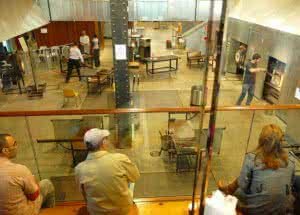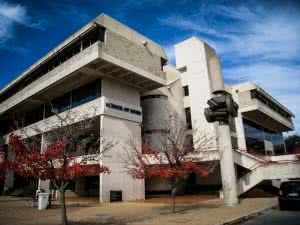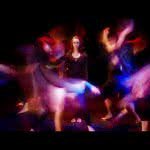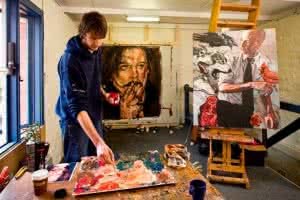MARKET CANBERRA AS ‘THE CREATIVE CAPITAL’
There is a process underway to review the brand of Canberra. A branding exercise needs to offer an insight, hopefully with a unique selling proposition. With regard to Canberra we suggest the city should be positioned as ‘The Creative Capital’. Why can we make such a bold claim and why is it important:
- it is Australia’s only ‘designed’ city;
- it has the highest per-capita representation of creative-industry business and employees in Australia;
- through our national cultural institutions Canberra is the holder of the cultural artefacts that articulate the Australian story;
- we have Australia’s most distinctive (ambitious) collection of public art;
- the arts attract visitors – statistics from recent visual arts blockbusters make this clear; and
- we have great artists in the region – let’s value them and recognise their achievements while promoting a different face for Canberra.
THE KINGSTON ARTS PRECINCT
 In terms of the Kingston Arts Precinct, what is most important is that all those committed to the arts and cultural life of our region – especially the ACT Government – have a grand vision, a strategic overview, a long-term plan for what’s needed to develop this area as a lively precinct for arts activity and cultural events. It’s a rare opportunity for the ACT to work with the various development authorities and stakeholders to establish an exciting set of cultural facilities and creative spaces in the vicinity of the iconic Kingston Powerhouse, now the home of the Canberra Glassworks, which is already a major national attraction. The Childers Group’s vision is a vibrant and accessible arts precinct for the visual arts in all its diversity, including film, new media and creative industries such as architecture, graphic design and digital technologies. In the Childers Group vision, Kingston is a place for live performance to happen but music would not be the focus.
In terms of the Kingston Arts Precinct, what is most important is that all those committed to the arts and cultural life of our region – especially the ACT Government – have a grand vision, a strategic overview, a long-term plan for what’s needed to develop this area as a lively precinct for arts activity and cultural events. It’s a rare opportunity for the ACT to work with the various development authorities and stakeholders to establish an exciting set of cultural facilities and creative spaces in the vicinity of the iconic Kingston Powerhouse, now the home of the Canberra Glassworks, which is already a major national attraction. The Childers Group’s vision is a vibrant and accessible arts precinct for the visual arts in all its diversity, including film, new media and creative industries such as architecture, graphic design and digital technologies. In the Childers Group vision, Kingston is a place for live performance to happen but music would not be the focus.
The full vision statement for the Kingston Arts Precinct is available here.
THE ANU SCHOOL OF MUSIC
 The School of Music was established in 1965 as an autonomous ‘conservatorium’ model of teaching (one-to-one) and performance. This vision was part of a long-term plan to stimulate, develop and enhance professional musical life in Australia’s emerging national capital city. Funding was available to employ outstanding, experienced professional musicians for instrumental teaching and performance. Since then, the School’s presence has been the ‘life blood’ and a major contribution to every aspect of Canberra’s musical activity and the cultural life of the city. The reputation of the School of Music and School of Art was highly regarded nationally. Since 1992 when the School of Music (and the School of Art) amalgamated with the ANU, its teaching in schools and participation in concerts, performances, youth music activity and events have been a major part of Canberra’s cultural life and the public face and community profile of the ANU.
The School of Music was established in 1965 as an autonomous ‘conservatorium’ model of teaching (one-to-one) and performance. This vision was part of a long-term plan to stimulate, develop and enhance professional musical life in Australia’s emerging national capital city. Funding was available to employ outstanding, experienced professional musicians for instrumental teaching and performance. Since then, the School’s presence has been the ‘life blood’ and a major contribution to every aspect of Canberra’s musical activity and the cultural life of the city. The reputation of the School of Music and School of Art was highly regarded nationally. Since 1992 when the School of Music (and the School of Art) amalgamated with the ANU, its teaching in schools and participation in concerts, performances, youth music activity and events have been a major part of Canberra’s cultural life and the public face and community profile of the ANU.
Recent developments have seen the School of Music facing funding challenges. A revised ‘university model’-based curriculum, staff cuts and new budget arrangements have been proposed to achieve financial viability and the future of the School. The changed curriculum will inevitably see the loss of key professional instrumental teacher/performers and consequently their loss to Canberra’s musical life.
The ANU, ACT Government and community support for music education in Canberra is essential to ensure professional expertise is available for teaching, participation in the Canberra Symphony Orchestra, music ensembles, choral societies, youth music, festivals and musical events. The ANU and the ACT must work together to ensure the continuation of a professional level of music performance in Canberra and the ACT region.
A radical option might be the establishment of new ‘National Academy of the Arts’ outside the university sector where the conservatorium model does not easily fit. A National Academy of the Arts based in Canberra eventually accommodated in ‘state of art’ group of facilities could cater for music, visual arts, dance, theatre and film capitalising on the strong base of life and activity already present in these disciplines. This visionary option is seen as a long-term possibility for Australia’s national capital city but would require dedicated funding commitments from Federal and ACT governments and the private sector, new legislation, governance and administrative arrangements. The ACT Government could take a lead on facilitating discussions about the future.
A DANCE HUB
 Ausdance ACT recently conducted a review of dance facilities in Canberra. The organisation found that the numbers of dancers, particularly in schools and other cultural groups, is under-reported and there is a need for good facilities in the ACT. Building on the ‘hub’ model, Canberra is in the need for a high-quality dance hub with state-of-the-art facilities. The facilities could be shared between a number of organisations, offering space for schools, classes, and our independent dance creators and choreographers as well as performers. Locations that are currently under-serviced and would be suitable sites include: the inner sections of central Canberra, Gungahlin , Central Belconnen, South Tuggeranong, and Weston Creek.
Ausdance ACT recently conducted a review of dance facilities in Canberra. The organisation found that the numbers of dancers, particularly in schools and other cultural groups, is under-reported and there is a need for good facilities in the ACT. Building on the ‘hub’ model, Canberra is in the need for a high-quality dance hub with state-of-the-art facilities. The facilities could be shared between a number of organisations, offering space for schools, classes, and our independent dance creators and choreographers as well as performers. Locations that are currently under-serviced and would be suitable sites include: the inner sections of central Canberra, Gungahlin , Central Belconnen, South Tuggeranong, and Weston Creek.
ARTS IN EDUCATION, INCLUDING AN ACT-WIDE POETRY SLAM PROGRAM
 There has been considerable progress in establishing links between education and the arts in the ACT but more can be done to strengthen this relationship.
There has been considerable progress in establishing links between education and the arts in the ACT but more can be done to strengthen this relationship.
The Childers Group encourages the ACT Government to prioritise arts programs in schools. We would like to see an expanded commitment to include additional artists-in-residence and the establishment of a Canberra-wide Poetry Slam-in-Schools program. There is capacity within the ACT – and region – to provide an exciting and culturally rich experience for young people by encouraging participation in a very ‘cool’ art form that’s gaining world-wide recognition as an important emerging art form. Engagement in contemporary and relevant arts programs designed for young people has been shown to enhance their enjoyment of school, build self-confidence and lead to a stronger sense of community.
There is strong evidence from research undertaken in secondary schools, both within Australia and the United Kingdom, indicating engagement in the arts results in major benefits to young people. These include enhanced knowledge of social and cultural issues, development of creativity and thinking skills, increased communication skills, advances in social development and a heightened self-esteem. These are lifelong skills and worthy of investment.
The Childers Group estimates that $100,000 per year for three years would be sufficient to establish the ACT Poetry Slam-in-Schools program. The program should be developed with the burgeoning ACT poetry-slam community.
For more information, visit http://www.edutopia.org/arts-music-curriculum-child-development
A WORLD-CLASS ARTIST-IN-RESIDENCY PROGRAM
 The ACT region has all the ingredients to offer a world-class artist-in-residency program for all art forms: a planned an accessible city, a seat of modern democracy, a suite of national cultural institutions, over twenty key arts organisations, nationally recognised tertiary education providers, a vibrant urban environment surrounded by natural beauty and pastoral landscapes, a network of country towns, and a diverse and engaged population. Artist-in-residency programs off time and space to create, but also help to bring in national and international artists to work with local artists and the community. The ACT Government has developed a policy statement and tool kit, along with a small amount of funding for 2012/2013. The Childers Group strongly advocates for there to be ongoing funding within the order of $200,000 over the next five financial years in order to fully realise the potential of the program. This would build on the impetus generated by the Centenary of Canberra celebrations.
The ACT region has all the ingredients to offer a world-class artist-in-residency program for all art forms: a planned an accessible city, a seat of modern democracy, a suite of national cultural institutions, over twenty key arts organisations, nationally recognised tertiary education providers, a vibrant urban environment surrounded by natural beauty and pastoral landscapes, a network of country towns, and a diverse and engaged population. Artist-in-residency programs off time and space to create, but also help to bring in national and international artists to work with local artists and the community. The ACT Government has developed a policy statement and tool kit, along with a small amount of funding for 2012/2013. The Childers Group strongly advocates for there to be ongoing funding within the order of $200,000 over the next five financial years in order to fully realise the potential of the program. This would build on the impetus generated by the Centenary of Canberra celebrations.

